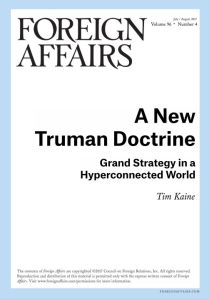Join getAbstract to access the summary!

Join getAbstract to access the summary!
Tim Kaine
A New Truman Doctrine
Grand Strategy in a Hyperconnected World
Foreign Affairs, 2017
What's inside?
On the foreign policy front, Washington lurches from one crisis to the next. There’s a better approach.
Recommendation
In this persuasive plea for a more coherent US foreign policy strategy, US senator Tim Kaine laments the loss of the old days when, for better or worse, everyone knew America’s role in the world. Since the fall of the Soviet Union, Kaine argues, no one is quite sure how Washington will respond to crises across the world. While Kaine makes a strong case for a new foreign-policy strategy, he offers few details to shape how it might look.
Summary
About the Author
US senator Tim Kaine was Hillary Clinton’s running mate in the 2016 presidential election. A Democrat representing Virginia, he is the former governor of Virginia and former mayor of Richmond.
















Comment on this summary